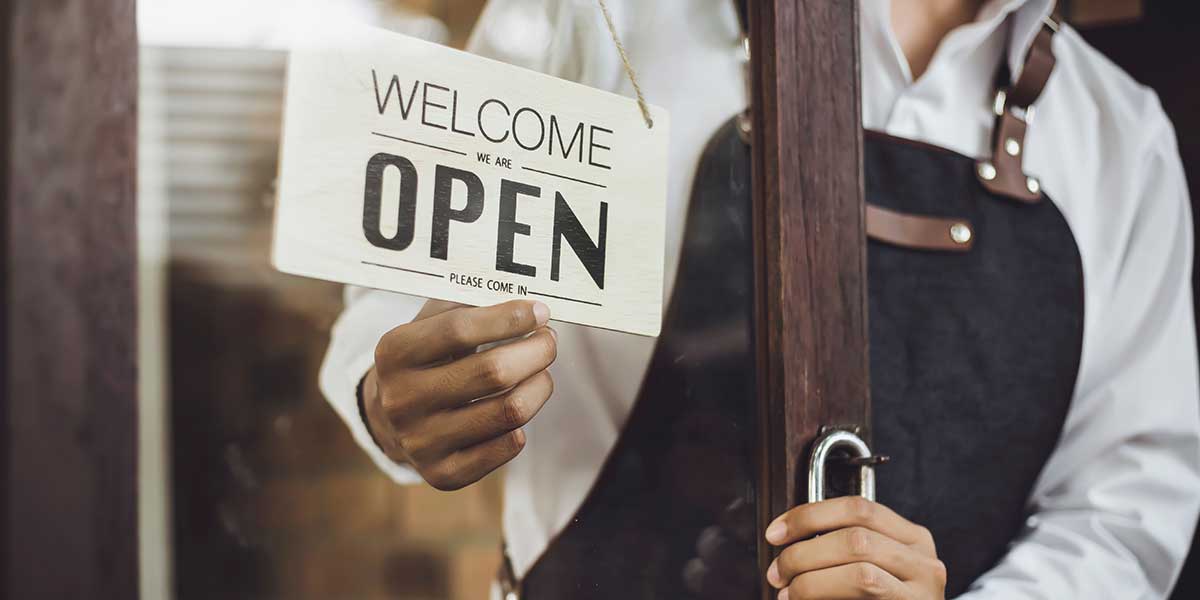The restaurant industry is exciting and ever changing. Opening a restaurant business is a long term play that requires hard work, solid preparation and sharp-as-a-knife execution. This guide will take you from A-Z on how to open a restaurant, starting with a detailed business plan all the way to launching and operating a successful business.
1. Planning & Concept Development
Creating a solid business plan from the onset is the foundation of success for any new business, including when starting a restaurant. Your business plan is a deep dive into the industry, your service, strategy, operations, finance, target market, competitors and the gap you intend to fill with your own restaurant. In this stage, seeking out mentors and speaking with people in hospitality will help you understand the realities of operating a restaurant before commit.
A restaurant concept or theme defines the type of restaurant you want to be, and what service style and experience you want to offer. It will include your name, cuisine, menu design, decor and brand. Your concept will fit in one of the below restaurant industry segments:
- Fast food restaurants
- Fast casual restaurant
- Casual dining restaurant
- Family style dining restaurant
- Fine dining restaurant
- Ghost restaurant (online only)
- Pop up restaurant
2. Calculating the Cost of Opening a Restaurant
Starting a restaurant involves a lot of upfront costs. The inside knowledge from the hospitality industry is that a successful and average restaurant owner is not likely to profit for two years. This is important to be prepared for, especially if you’re working with a partner, investors or obtaining small business loans. It will take time to recoup the initial investments.
Accurate forecasting and budgeting of operational costs and perspective income are what give new restaurants the best chance to succeed. Ensure these plans are realistic, keep costs low in areas that you can, and then eventually they will stabilise as revenue increases. Seek out advice for greater clarity.
Calculating the startup costs for your restaurant venture comes down to multiple factors, including:
- Restaurant industry segment (e.g. fine dining, casual dining, fast food)
- Size and location, including the cost of renting or owning the space
- Interior design, fit out and kitchen equipment
- Insurance, licensing, permits and government certifications
- Hospitality management technology, subscriptions and payment systems
- Uniforms, menus, tableware, glassware, takeaway containers, etc. costs
- Number of staff
- Food and supply costs
- Ongoing operational costs
The costs of starting a restaurant have and need limitations. Work out what is essential, what you can do yourself and what requires the help of experts like a consultant, architect, builder, lawyer or digital marketing agency. Everything has a price so it’s important to think long term.
3. Finding the Right Location
Location is just as important in the hospitality industry as it is in real estate. It can affect your long term profitability, successful business operations and future growth. The right location will help your restaurant find customers and help customers find you.
Before signing the rental or buyer's contract, conduct an in-depth restaurant location analysis and get familiar with the area. The right location will depend on your chosen restaurant concept and segment. Fine dining restaurants suit big city locations, whereas family style restaurants will attract customers in the suburbs. Balance the capabilities of your restaurant business with the following:
- Local zoning laws and regulations - is the space zoned for a restaurant? Does it allow liquor licensing? What needs to be set up to launch a restaurant there?
- Target market - is the location central to your target demographic? Is it where they live, work, shop or go out? Does it fulfil their dining criteria?
- Visibility - is the location on a busy street with lots of vehicle and foot traffic?
- Accessibility - is parking available, is it close to public transport and easy to get to? How is the floor plan? Can suppliers easily deliver? Is construction planned for the area?
- Staffing cost - what kind of staff will it draw to work there? How much more are you willing to pay to attract high quality staff, especially if the area is desirable with a high cost of living?
- Competition - will the location help you stand out from the competition (e.g. not situated nearby established direct competitors)? Do nearby business help or hinder your restaurant?
- Safety - how are the crime rates? Do you need premium insurance?
Your location is a physical marketing asset. Unless you have a big name celebrity chef in the kitchen that can draw people to your off-the-beaten-track location, it’s best to follow the formula above when making decisions on your restaurant's location.
4. Venue Permits, Licensing & Insurance
Before you open a restaurant, there are a few government and legal requirements that need to be met. The exact permits, licences and certificates you need will vary depending on the concept or type of restaurant, venue size and location. As one of the major things to consider when opening a restaurant, it’s important to start this early as applications are costly and can take time to process.
The legalities and licences you need to open a restaurant include:
- Business licence - different regulations and requirements are based on whether you need an Australian business licence or a New Zealand business licence.
- Local council - including applications for renovations, outdoor dining, zoning, fire safety and compliance.
- Liquor licence - for both the venue and staff to legally serve alcohol
- Food licence - based on your food business classification.
- Music license - to play copyrighted music.
- Insurance - including property insurance, public liability insurance, product liability insurance, theft and workers' compensation.
Other requirements - food safety standards, food waste management and other accredited workplace training for staff.
5. Design & Build-Out
The design of your restaurant speaks volumes about who you are as a brand and business. It is another way to connect directly with your customers and impact their overall dining experience. A new restaurant may utilise builders, architects and interior designers to help them achieve optimal results. Before beginning, ensure that all building regulations for your commercial space have been met.
Whether you’re setting up a restaurant in a new space or one that was a food service operation before, there are a few elements to consider when designing the space. The floor plan must maximise the efficiency, flow, safety and accessibility in all areas as this directly impacts your restaurant's revenue. Factor in these areas for your restaurant fit out plan:
- Front of House (FOH) areas - entry, waiting area, indoor and outdoor dining room floor plan, placement of Point of Sale (POS) systems, bar areas, bathrooms
- Back of House (BOH) areas - main kitchen, workspace, storage and refrigeration areas, dishwashing area, staff break room and administrative office
A restaurant design concept extends past the restaurant furniture and fittings, to the ambience and feelings you want to evoke in your customers. From the moment they walk into the styling, colours, lighting, dining room furniture, seating, tableware, menu, specials board, service style, artwork, scent, music and acoustics. All these elements can leave a lasting impression on your customers.
6. Employing Staff
The type of service and experience your restaurant offers is a key differentiating factor in the hospitality industry, so take the time to hire and train the right people before you launch. Start by getting your leadership team together as this will set the workplace culture subsequent staff will follow. This includes the right restaurant manager and head chef as they will be running the operations and kitchen. Additionally, consider the salaries you can offer and how they will attract experienced staff.
Restaurant employees are categorised as:
- Front Of House (FOH) staff - host, head waiter, waiters, sommelier, bar staff, runner, busser.
- Back of House (BOH) staff - head chef, sous chef, kitchen manager, dishwasher.
- Restaurant Operations staff - assistant restaurant manager, cleaning team.
Restaurants must also appoint someone in their team to be a food safety supervisor and certifications in food preparation and food safety are needed for staff.
7. Creating a Menu
Most restaurant owners or managers create their food and drink menus in collaboration with their head chef. As this is the bread and butter of your hospitality business, the cuisine, ingredients and food costs, suppliers, menu offerings, food and beverage pairings, and pricing should be carefully curated.
Your menu will depend on what segment of the restaurant industry you fit in and your target market. Having too many menu choices it’s ideal so focus on what is best for your customers, bottom line, sourcing availability and cost. Plan your pricing strategy so that it’s attractive to customers and inclusive of profit margin, cost of goods sold (COGS), producing and sourcing costs. Then compare against competitors. Making adjustments where necessary may be an ongoing process.
While menus should have consistent core items, menus can also change seasonally or even daily with special offers. Your kitchen staff, friends and family can serve as great menu testers, helping to identify what meals should be on the menu and what may draw the highest sales volume. Nowadays restaurants also commonly design menus to include options for diners with food sensitives, allergies and dietary restrictions, as well as non-alcoholic beverages and a cocktail menu.
8. Locating a Food Supplier
Finding quality and reliable food suppliers is essential to any food service operation. This takes time and is a process of building relationships. You may opt to source your ingredients from a one-stop shop like a wholesale food supplier. Or directly from local farmers, organic suppliers, butchers, fish markets, regional and global boutique food and beverage businesses or hand-picked from the local market.
Avoid complicating your operations by keeping your supplier list small. Compare quotes, negotiate on prices and get an understanding of each supplier's product range, food quality checks and delivery options. Food costs are core outgoing costs for restaurants. Therefore finding the right supplier with the right price so that you can accurately forecast your operational costs can help you succeed in the restaurant business. Note that food and supply costs are often prone to market fluctuations.
9. Restaurant Technology
Setting up a restaurant also means keeping up with the industry and embracing restaurant management technology. Before opening a restaurant, ensure your business is supported with the right restaurant tech to streamline your operations and service response time.
Your restaurant POS system assists in the daily operations of your restaurant and should include functions for:
- Payment - total payments, split bills, take cash and credit card payment methods, wireless table payment.
- Orders and service - manage bookings, take manual and digital customer orders, QR code orders, take away and delivery orders.
- Inventory management - monitor stock levels and supply orders.
- Staff management - scheduling staff rosters and staff performance tracking.
- Accounting - Cash flow management, revenue and operational expense tracking.
- Reporting - business and finance reports for budgeting and forecasting.
Other technology you may need includes order and receipt printers, ipads for customer orders, point of sale system computer, payment terminal and cash drawer.
Explore the many ways ResDiary can help your restaurant run efficiently and scale with your business goals through our restaurant management system features and tech integrations.
10. Marketing & Promoting Your Restaurant
A successful restaurant business needs a few marketing strategies up its sleeve to attract potential customers to dine with them, return and spread the word favourably online and offline. Happy customers make the best marketers and they can directly help in creating future revenue.
Develop your brand and marketing strategy, and start actioning promotional tactics before your restaurant is open for business. Launching your online presence via a website and social media can help your restaurant target customers and generate positive PR. As well as creating a Google business profile for your restaurant and promoting your venue in publications, blogs and restaurant directories.
11. Preparing for Launch
One of the best ways you can prepare for your new restaurant launch is through a soft opening. Think of it like a final testing stage that can be scheduled a few days or weeks before your grand opening to the public. It’s an opportunity to iron out the kinks before you open the doors for business and invite guests and media to spread the word.
A soft opening will help create buzz, predict demand and give you insight into your target market. Providing you with direct feedback on your menu, food quality and consistency, pricing, staff knowledge, speed of service, booking system and time frames, restaurant layout and operational capabilities.
12. Ongoing Operations
At this stage, you’ve managed to turn your goal into a reality and now it’s about turning your new restaurant into a long term success. Be prepared that it takes an average of 2 years for a new restaurant to be profitable. With that in mind, focus on improving business performance and execution. Stay persistent and resilient.
Part of running a successful restaurant requires you to be adaptable to the changing industry and needs of customers. It means continually testing things out, trying creative ideas and using feedback to pivot and make better decisions. Collect as much data as you can on your customer experience, finances and competitors and use this to power your restaurant business forward.
Frequently Asked Questions (FAQ's)
Why Would Anyone Open a Restaurant?
People usually open a restaurant for one of two reasons or a combination of both. They want to serve and share their passion for food or a particular culture with others. Or they see a market opportunity that has the potential for high reward.
Is It Profitable to Run a Restaurant?
Restaurants can be extremely profitable but don’t expect profits on average for 2 years. Variables such as size, location, type of restaurant, market conditions, number of employees, and incoming and outgoing costs all impact your profit margin.
How Much Does It Cost to Open a Restaurant?
On average, opening a restaurant in Australia costs approximately $650k in upfront costs, plus ongoing operational costs, most of which cover wages, food and location expenses.
What License Do I Need to Open a Restaurant?
The licensing requirements for opening and operating a restaurant vary depending on your location, size and type of restaurant. Contact your local council directly to understand your legal requirements for running a food business.
Want to find out more? We have a library of resources to assist.





